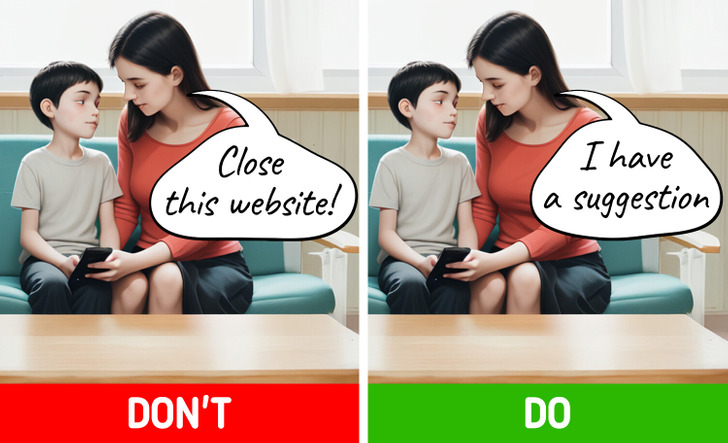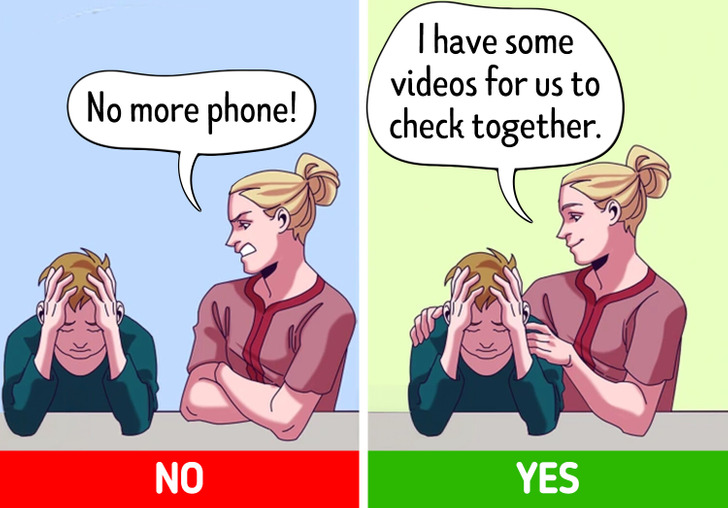16 Moments That Remind Us to Stay Kind Even If the World Turns Ice Cold


Imagine this: You hand your child a tablet to keep them occupied during dinner prep, and before you know it, you’ve embarked on a never-ending quest to manage apps, screen time, and online etiquette. Parenting in the digital age often feels like navigating a maze without a map. But what if there were a few unwritten rules—simple, clever guidelines—that could help restore some calm and confidence?
In a world where smartphones double as lullabies and tablets turn into “quiet-time” essentials, these 10 lesser-known parenting principles can help you embrace tech’s benefits without losing the magic of childhood wonder.

Why It Matters:
Your kids are digital natives, soaking up technology effortlessly. Understanding your position as a learner—rather than an all-knowing authority—sets a tone of honesty and openness about technology.
Key Tip:
Let your child teach you something new about their favorite app. It’s a subtle role reversal that builds trust and respect.

Why It Matters:
Open communication about the risks of technology use builds trust and confidence, ensuring children feel safe turning to you when they face online challenges. By encouraging them to share their concerns, you create an environment where problems can be tackled together, rather than hidden or misunderstood. This approach not only helps your child develop healthier online habits but also reinforces your role as a supportive ally in their digital journey.
Key Tip:
Be explicit that you want your child to come to you with any online difficulties—even the confusing or upsetting ones. When they do reach out, thank them before doing anything else. This simple “thank you” reassures them that you value their honesty and are willing to help without immediate judgment or punishment, making it more likely they’ll seek your guidance in the future.

Why It Matters:
Establishing “yes” rules for healthy online behavior and “no” rules to avoid harmful actions clarifies expectations, helping children understand what positive digital citizenship looks like. Acknowledging that mistakes are part of the learning process reduces fear and encourages open communication. By letting them know they won’t be “in trouble” for honestly sharing challenges, you build trust and promote a growth mindset, empowering them to make safer and more responsible choices online.
Key Tip:
Collaboratively define clear “yes” and “no” rules with your child, making sure they understand the reasoning behind each one. Remind them regularly that they’re allowed to stumble and that honest conversations are welcomed. Over time, this supportive environment helps children feel more confident in navigating the digital world responsibly.

Why It Matters:
Designating tech-free zones or times fosters better work-life balance and supports overall well-being—especially when it comes to sleep quality. By removing devices from the bedroom or other key areas, you encourage healthier habits, more focused family time, and the opportunity for everyone to unwind without digital distractions.
Key Tip:
Decide together on a specific area (like a living room charging station) or timeframe (no devices after 8 p.m. and during meals) to keep technology out of play. Being consistent with these boundaries sets a positive routine that everyone can respect and benefit from in the long run.

Why It Matters:
When technology is used as a tool for shared fun rather than a solitary distraction, it can strengthen family bonds and spark creativity. Exploring apps, videos, and online resources together turns screen time into a springboard for new interests, memorable experiences, and meaningful connections.
Key Tip:
Schedule regular “tech-play” sessions. Whether you’re co-creating digital art, finding a new cooking tutorial, or exploring an online activity, involving everyone keeps the experience lively and collaborative. This approach transforms technology into a shared adventure instead of just another screen.

Why It Matters:
Children’s understanding of online risks evolves as they grow. While younger kids may grasp the basics of privacy, they often find it hard to see the long-term impact of their digital actions. By having age-appropriate conversations, you help them navigate questions about trust, information credibility, and personal safety, building a foundation for responsible online behavior. Engaging them in these discussions not only raises their awareness but also empowers them to identify warning signs, seek help, and take proactive steps to protect themselves in the digital world.
Key Tip:
Start with open-ended questions that invite them to think critically:
Involving your child in these questions helps them feel respected, heard, and confident. Over time, these guided conversations nurture a habit of open dialogue, ensuring that they feel comfortable seeking help and guidance whenever they face online challenges.
Why It Matters:
Kids today grow up surrounded by technology, using devices like smartphones, tablets, and laptops both at home and school. While these tools can be incredibly beneficial, they also come with risks. A technology contract offers a way for families to work together on setting rules for device use and internet access. This agreement ensures everyone is aligned on how to use technology effectively and, most importantly, how to stay safe online.
Key Tip:
Remind your kids that their devices are a privilege, provided in good faith. Make the contract a requirement for continued use. Include rules for device usage, consequences for violations, and guidelines for online behavior. Ensure your child understands the importance of these rules and commits to following them.

Why It Matters:
Even with clear internet rules in place, children may occasionally break them. That’s why having an additional layer of protection is valuable. A monitoring service can alert parents and guardians to potential issues like cyberbullying, sexting, online predators, depression, and more.
These alerts provide timely information, enabling parents to step in and address problems before they escalate. It’s a proactive way to ensure your child’s online safety and well-being.
Key Tip:
Consider using a monitoring service that tracks your child’s texts, emails, YouTube activity, and other apps and social media platforms.

Even if they have a simple flip phone for emergencies, it’s important to ensure they periodically memorize your phone number. Flip phones can break, get lost, or run out of battery. If they know your number by heart and find themselves lost, they can always call you for help. It’s also essential for them to memorize their address, so they can provide it for someone else’s GPS if needed.

Show kids that technology has its time and place and can be both helpful and enjoyable. Watching “oddly satisfying” videos, like mixing paint colors or building giant Lego creations, can be a fun activity. Laughing at riddles and jokes, listening to podcasts, or taking silly photos and videos together are great ways to use technology positively.
More interesting articles can be found here.











